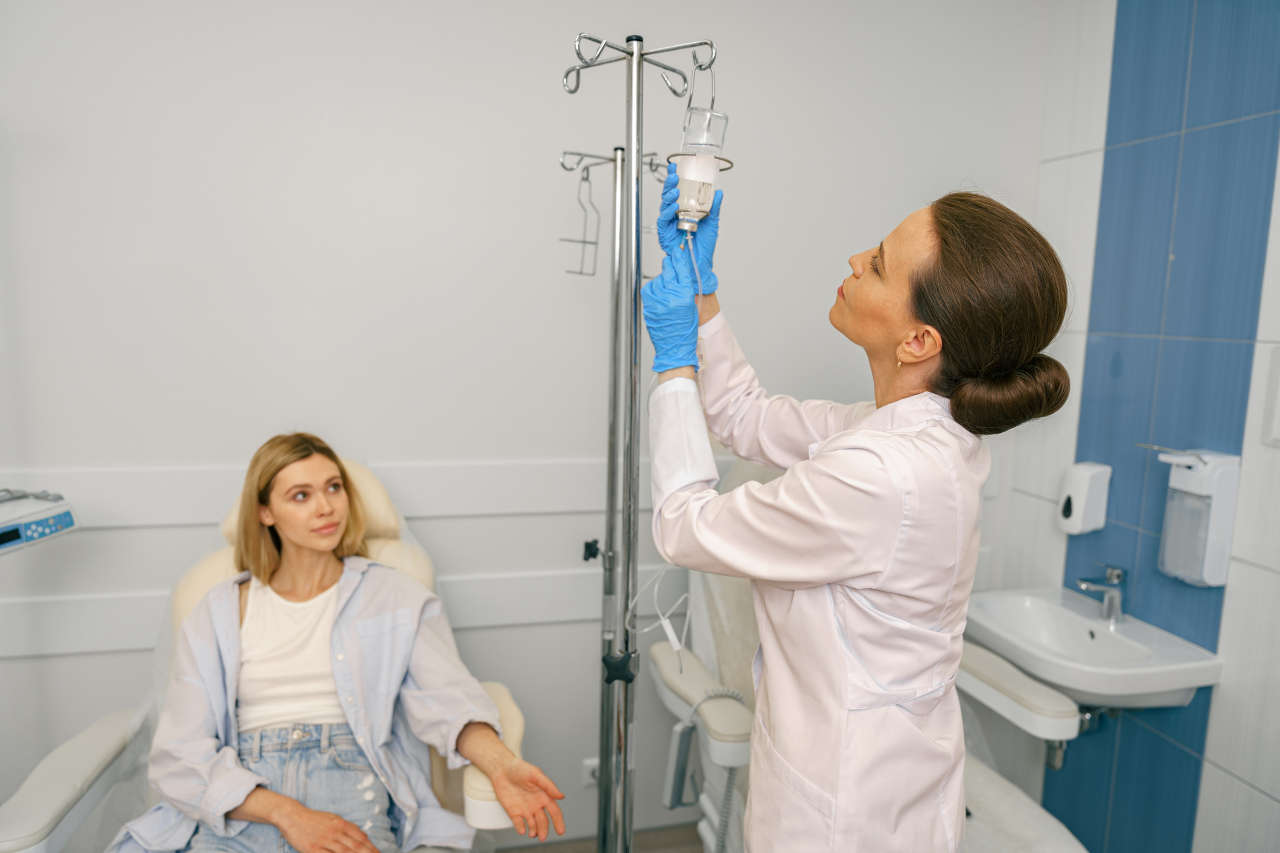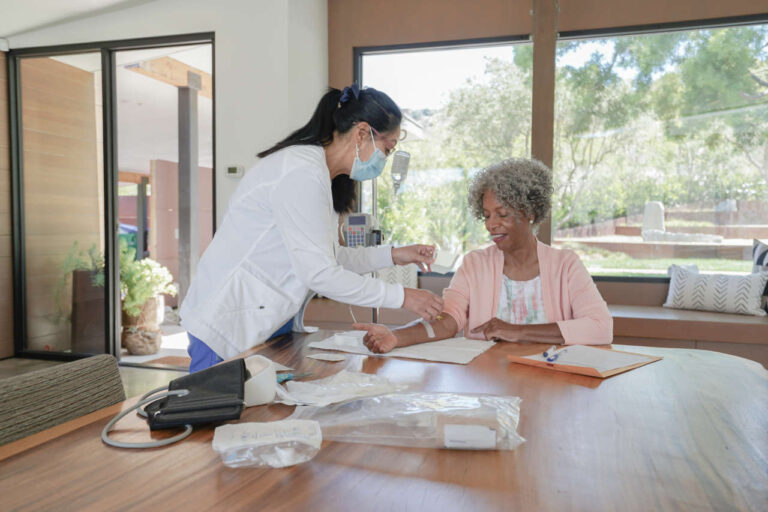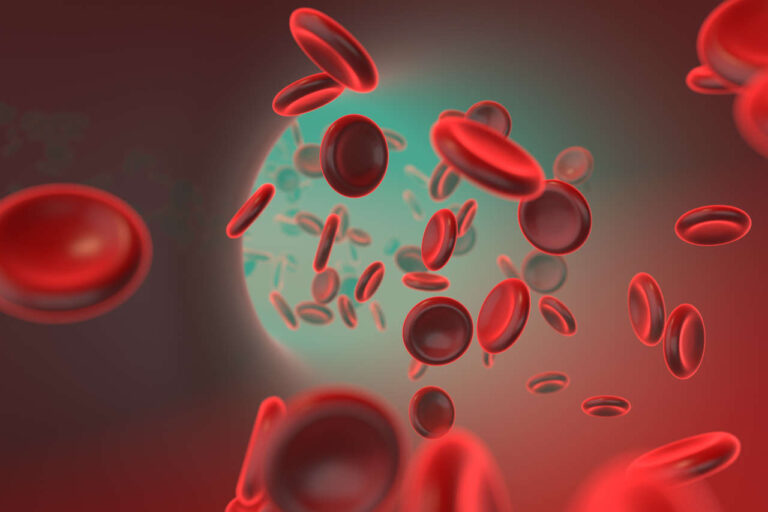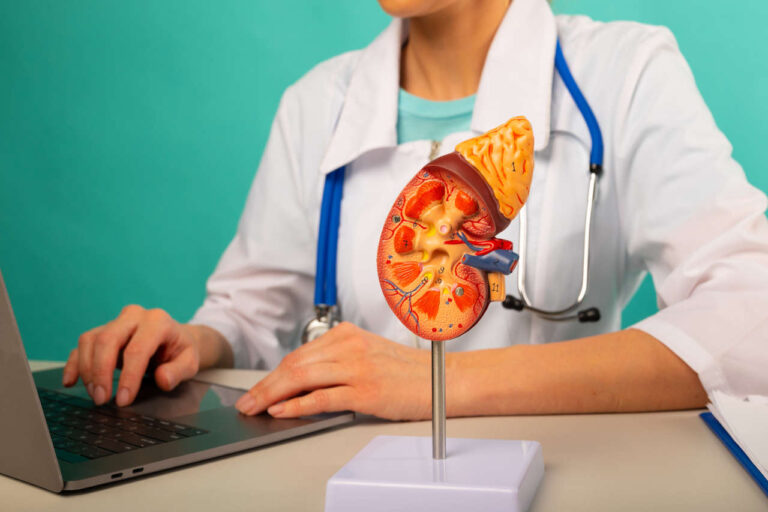
If you notice a painful rash, blisters, or lesions on your skin after taking certain medications, you should get immediate medical help, as these are the alarming signs of an acute, rare, and potentially fatal skin disorder called Stevens-Johnson syndrome or SJS.
Get IVIG Prior Authorization
Stevens-Johnson syndrome is a rare but serious skin condition that affects approximately two to seven people out of a million annually. Each year, around 300 new cases of SJS are reported in the United States.
Among the treatment options for SJS, IVIG therapy is considered an effective approach for treating this life-threatening skin condition.
This article discusses Stevens-Johnson syndrome, how it occurs, and how IVIG can help.
What Is Stevens-Johnson Syndrome?
Stevens-Johnson syndrome is a rare and life-threatening condition that severely affects your skin and the lining of mucous membranes. It is often triggered by certain medications (in over 80% of cases) or infections (viral or mycoplasma pneumoniae).
SJS begins with flu-like symptoms, including fever, sore throat, and fatigue. Within a few days, red or purplish spots on the skin appear. Eventually, the skin around these spots peels away in sheets as blisters pop. Moreover, the mucous membranes of the mouth, eyes, and genitalia are also affected and result in painful ulcers.
What Causes Stevens-Johnson Syndrome?
A genetic mutation in the HLA-B gene is considered the main cause of Stevens-Johnson syndrome. This gene is a part of the human leukocyte antigen (HLA) complex, which helps the immune system differentiate between proteins made by the body and those produced by pathogens like bacteria and viruses.
Studies reported that variations in the HLA gene cause the immune system to react abnormally to certain medications (e.g., anticonvulsants, allopurinol, sulfonamides, nevirapine, NSAIDs, carbamazepine, etc.) and cause the destruction of the cells (keratinocytes) in the skin and mucous membrane.
Immune cells, particularly cytotoxic T-cells and natural killer (NK) cells, release granulysin, a substance that destroys the skin and mucous membrane cells and causes blistering and peeling.
How Does IVIG Therapy Work in Patients With SJS?
Some studies have shown that IVIG therapy can help regulate immune function, reduce mortality, and improve outcomes in patients with Stevens-Johnson syndrome if started early.
For example, a case report of a ten-year-old female patient who received a dose of 750 mg/kg/day (4 days) of IVIG, along with intravenous fluids and clindamycin, showed significant improvement in her condition without a fever spike and with remission of her skin lesions after 8 days of treatment.
Working Mechanism of IVIG Therapy
Though the exact mechanism of IVIG therapy is unclear, it is thought to work by:
1. Suppressing the CD8+ T Cell Activation
Since the activation of CD8+ cytotoxic T-cells and NK cells causes the destruction of the keratinocytes in the skin and mucous membrane, IVIG therapy works to strongly suppress their activation, which results in reduced response to drug components.
Moreover, IVIG also reduces the number of NK cells in the blood and the level of granzyme B (an enzyme present in the granules of NK cells and cytotoxic T cells that destroy keratinocytes). Thus, IVIG prevents disease severity and progression by reducing the amount of granzyme B in the plasma.
2. Reducing Inflammation
The anti-inflammatory properties of IVIG therapy reduce inflammation and prevent further skin and mucous membrane damage caused by inflammation in patients with Stevens-Johnson syndrome.
3. Promoting Wound Healing
The antibodies provided by IVIG therapy promote a rapid wound-healing process in Stevens-Johnson syndrome patients. Furthermore, some studies suggest that IVIG combined with corticosteroids has reduced the recovery time in individuals with Stevens-Johnson syndrome.
In addition to this, IVIG therapy also decreased the mortality rate in Stevens-Johnson syndrome patients who received IVIG therapy (a dose of ≥2 g/kg) compared to others who did not take the IVIG treatment.
Get Financial Assistance
How Long Is IVIG Therapy Given to Patients With Stevens-Johnson Syndrome?
The duration of IVIG therapy in patients with SJS depends on the disease severity. Typically, IVIG is considered during the severe stage of SJS called toxic epidermal necrolysis, and patients receive IVIG infusions daily for 3 to 5 days.
Can IVIG Cause Any Side Effects in Patients With Stevens-Johnson Syndrome?
A patient with SJS may experience some side effects while receiving IVIG infusions. Some common side effects include allergic reactions, nausea, headache, chills, or fever.
What Is the Recommended Dosage of IVIG for Stevens-Johnson Syndrome?
The recommended initial dose of IVIG for patients with Stevens-Johnson syndrome and whose SCORTEN (a scale that determines the severity of skin conditions) is higher than 0 is 2 – 3 g/kg, which is given over 2 – 3 days, depending on the disease severity.
Summary
Stevens-Johnson syndrome (SJS) is a severe skin condition that causes painful rash and blisters on the skin and mucous membrane lining. This skin reaction is caused by a drug-mediated immune response that targets and kills the keratinocytes (cells present in the epidermis). IVIG therapy is considered a promising treatment for SJS and helps to calm down the abnormally active immune response in SJS patients.
REFERENCES:
- Zhang, C. (2016). The Effect of Intravenous Immunoglobulin Combined with Corticosteroid on the Progression of Stevens-Johnson Syndrome and Toxic Epidermal Necrolysis: A Meta-Analysis. PLoS ONE, 11(11). https://doi.org/10.1371/journal.pone.0167120
- Barron, S. J., Del Vecchio, M. T., & Aronoff, S. C. (2015). Intravenous immunoglobulin in the treatment of Stevens-Johnson syndrome and toxic epidermal necrolysis: A meta-analysis with meta-regression of observational studies. International Journal of Dermatology, 54(1), 108-115. https://doi.org/10.1111/ijd.12423
- Roujeau, C., & Bastuji-Garin, S. (2011). Systematic review of treatments for Stevens–Johnson syndrome and toxic epidermal necrolysis using the SCORTEN score as a tool for evaluating mortality. Therapeutic Advances in Drug Safety. https://doi.org/10.1177/2042098611404094
- Hsieh, M., Watanabe, T., & Aihara, M. (2021). Recent Dermatological Treatments for Stevens-Johnson Syndrome and Toxic Epidermal Necrolysis in Japan. Frontiers in Medicine, 8, 636924. https://doi.org/10.3389/fmed.2021.636924
- Yang, L., Shou, Y., Li, F., Zhu, X., Yang, Y., & Xu, J. (2022). Intravenous Immunoglobulin Combined With Corticosteroids for the Treatment of Stevens-Johnson Syndrome/Toxic Epidermal Necrolysis: A Propensity-Matched Retrospective Study in China. Frontiers in Pharmacology, 12, 750173. https://doi.org/10.3389/fphar.2021.750173
- Oakley, A. M., & Krishnamurthy, K. (2023, April 10). Stevens-Johnson Syndrome. StatPearls – NCBI Bookshelf. https://www.ncbi.nlm.nih.gov/books/NBK459323/#:~:text=The%20drugs%20that%20most%20commonly,Sulfonamides%3A%20cotrimoxazole%2C%20sulfasalazine
- Chen, J., Wang, B., Zeng, Y., & Xu, H. (2010). High-dose intravenous immunoglobulins in the treatment of Stevens-Johnson syndrome and toxic epidermal necrolysis in Chinese patients: a retrospective study of 82 cases. PubMed, 20(6), 743–747. https://doi.org/10.1684/ejd.2010.1077













